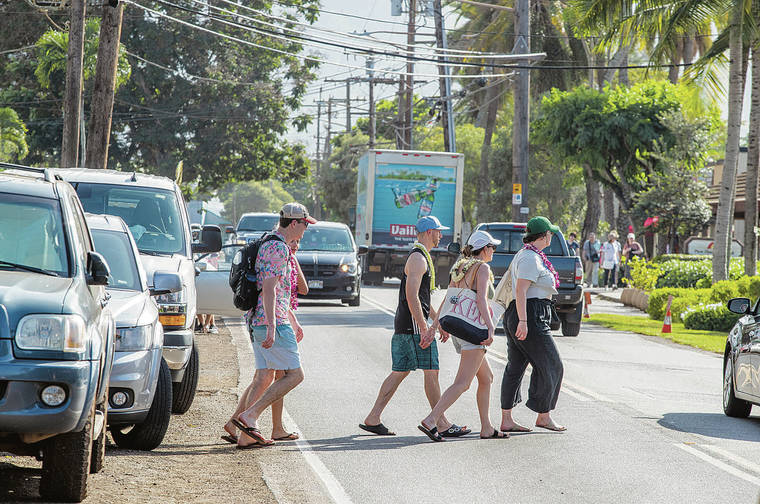
DENNIS ODA / DODA@STARADVERTISER.COM
Tourists cross Kamehameha Highway in Haleiwa on Tuesday.

Select an option below to continue reading this premium story.
Already a Honolulu Star-Advertiser subscriber? Log in now to continue reading.
Hawaii tourism is well on track to have another record-breaking year — topping 10 million visitors, which would continue a decade-long streak. But it certainly won’t be business as usual for the industry as the new decade dawns.
A couple of major policies are shifting the tourism landscape even as we speak: Oahu’s new, needed crackdown on illegal vacation rentals in residential neighborhoods, estimated at anywhere from 8,000 to 10,000 units; and the Hawaii Tourism Authority (HTA)’s new push for more environmentally-friendly and sustainable tourism.
New data from HTA on Wednesday showed 800,449 tourists in Hawaii last month, a 4.8% increase compared with a year earlier. That brought the 2019 total through October to nearly 8.7 million, up from 8.2 million at the same time last year.
While totals are rising, though, spending isn’t quite as robust: It did rise slightly last month compared with last year, but the seven months prior to June had seen a concerning drop in spending.
Some of that lower spending is attributed to more budget-minded visitors opting for non-hotel vacation rentals, a demand-and-supply cycle that had fueled the illegal-rentals market, to the point of scofflaws operating businesses in once-calm residential neighborhoods. Since June, a new Oahu law has worked to restore more appropriate zoning law and order.
Also needed and welcome is HTA’s push to educate all tourists on better stewardship, via its new Kuleana Campaign and ramped-up Aloha Aina community grants.
Both recent policies reflect an evolving realization that booming tourism comes at direct costs to residents and environment. How the policies affect Hawaii’s tourism economy will surely become clearer next year, once they take better hold.

